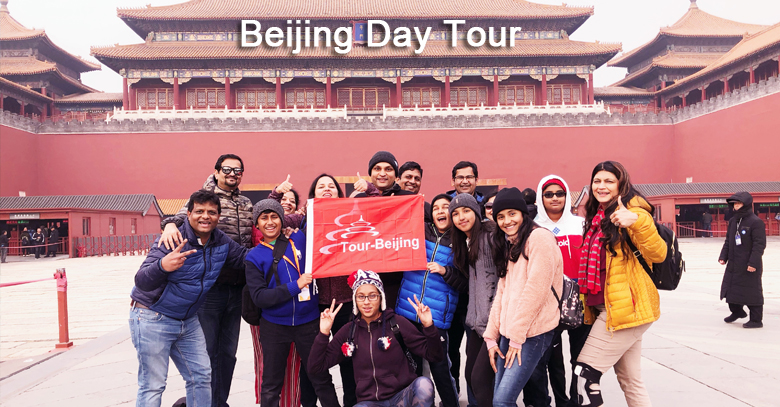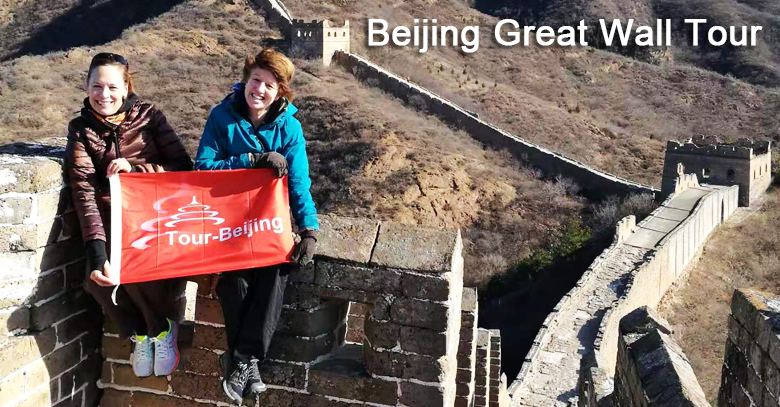选自旅游文章和日常旅行中的的英语词汇和表达方式,了解和运用地道旅游英语。
环球旅游英语 Tourism English
意大利庞贝古城旅游指南 Tips for visiting Pompeii ( by Helen)
Visiting Pompeii, the ancient Roman city in southern Italy that was destroyed by a volcano, is on a lot of people’s travel bucket lists. Before I visited Pompeii I felt quite overwhelmed about the best way to visit, so I did a ton of research. Here’s the advice I found most useful on how to visit Pompeii, along with some tips on how to climb Vesuvius.
Where is Pompeii?
Pompeii is in the Campania region of southern Italy, 15 miles south of Naples and 150 miles south of Rome. It’s 16 miles from the lovely resort town of Sorrento and 22 miles from Positano, on the Amalfi coast.
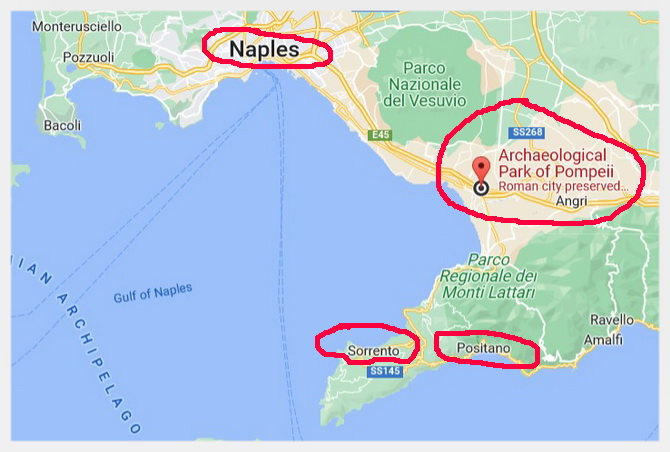
Rather confusingly, the archaeological site of Pompeii (you might see it referred to as Parco Archeologico di Pompei or Pompei Scavi on maps) is right next to a modern town called Pompei.
The volcano that destroyed the ancient city, Mount Vesuvius, is still active, so the people living in the modern town still live with the risk of another eruption. You can see the volcano towering above the landscape from all over the area.
What happened at Pompeii?
In AD79, Mount Vesuvius erupted. The force of the explosion blew the entire top of the mountain off, sending rocks, ash and dust over 10 miles into the sky. The rocks and ash rained down on Pompeii for nearly a full day. Most residents fled the city but around 2,000 people (around a tenth of the population) stayed behind.

When, finally, a flood of thick ash, poisonous gases and superheated rock hit Pompeii at nearly 100 miles an hour, the city was buried underneath millions of tonnes of volcanic debris. The victims’ bodies decomposed where they’d died, leaving body-shaped spaces in the hardened ash. Almost 2000 years later, archaeologists were able to pour plaster into these spaces, revealing the last moments of the victims and creating Pompeii’s famous body casts.
How to get to Pompeii
The best way to get to Pompeii from Naples or Sorrento is by the local train, called the Circumvesuviana. The best station for the ruins in normal times is Pompei Scavi – Villa Dei Misteri train station. Pompei Scavi – Villa Dei Misteri station is on the railway line from Naples to Sorrento.
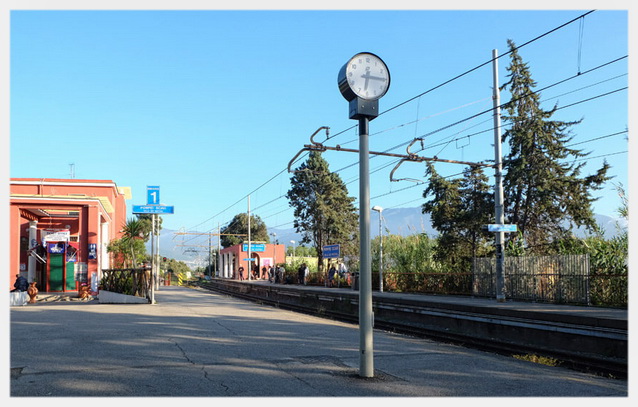
An alternative to the Circumvesuviana train is the Campania Express. These trains run on the same route as the Circumvesuviana but stop only at popular tourist sites like Naples, Pompeii, Herculaneum and Sorrento. The Campania Express trains have air conditioning, guaranteed seating and space for luggage, but cost significantly more than the Circumvesuviana.
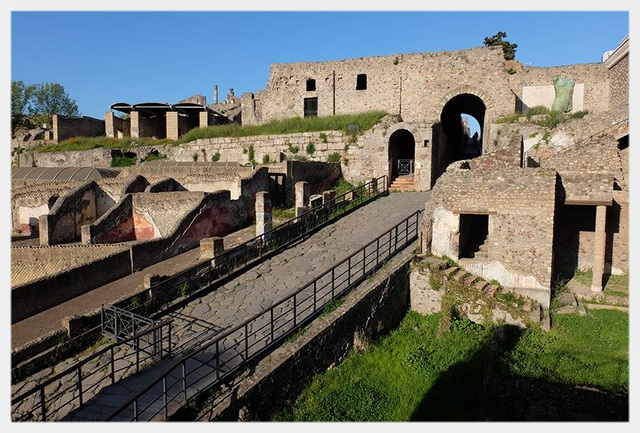
Pompei Scavi station is less than five minutes’ walk from the Porta Marina main entrance to the ruins.
Don’t expect to see even the highlights of Pompeii in a couple of hours
With a 2 hour tour and 2-3 hours on your own you can get a taste for the city but Pompeii is easily worth a full day. We arrived at around 10.30am and didn’t leave until closing time.
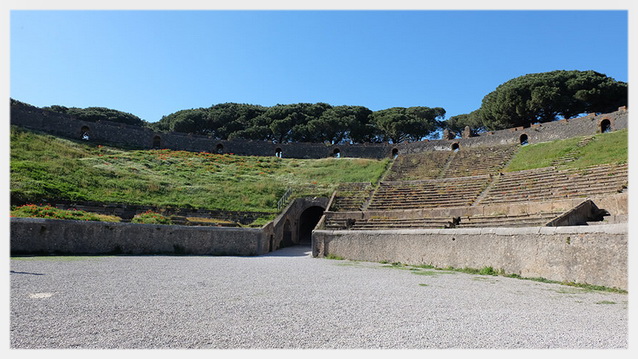
The main sights are quite far from each other, particularly the larger amphitheatre and the Garden of the Fugitives where the main group of bodies are.
Don’t take a big bag into the ruins
The level of strictness at Pompeii varies a lot but it’s best to assume that the staff won’t allow you to take big rucksacks or luggage into the ruins. As well as being for security, it’s also to reduce damage to the ruins themselves from people rubbing against the walls with their bags.
There were a small number of luggage lockers at the entrance when I visited but it’s best to leave bulky bags at your accommodation.
How to visit Mount Vesuvius
Visiting Pompeii is unmissable, but it’s an awe-inspiring experience to go to the top of Mount Vesuvius and see (and smell) the smoke that still rises up from the crater.
You can take a bus from the Pompei Scavi Circumvesuviana station to Mount Vesuvius but the easiest route is from the station at Ercolano. On leaving the station in the direction of the ruins you’ll come out in a little square. Head to the left and you’ll see the Vesuvio Express office for the bus trip up the mountain. Try to get to the office as quickly as you can – if you’re at the back of the queue and the bus fills up you might need to wait for the next one.
The return trip from Ercolano to Mount Vesuvius cost us 20 Euro each including entrance to the crater. It’s not a guided tour, it’s literally just to get you to the start of the hike to the summit but we found it reasonably priced and efficient.
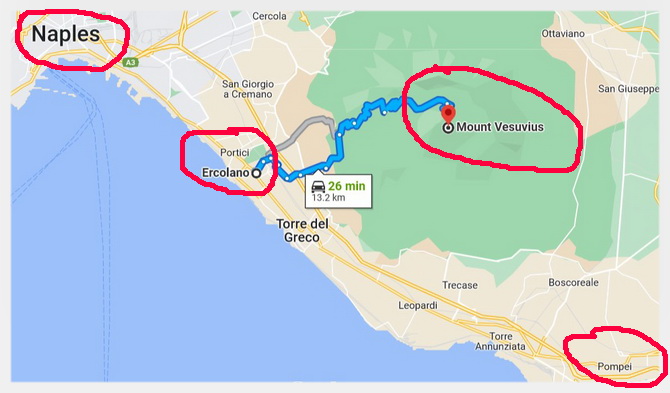
The bus takes around half an hour to wind its way up the lower part of the mountain. You’ll be let out at the upper car park and will have around an hour and a half to get up the mountain, look around and get down again to catch your return bus. If you miss it you’ll have to pay again or make your own way back.
From the upper car park it’s about a mile to the Vesuvius’s crater, all uphill. It’s a fairly shallow gradient but it’s fine, dusty gravel underfoot so can be tough going. If it would help, you can take a walking stick from one of the guys at the entrance in return for a tip.
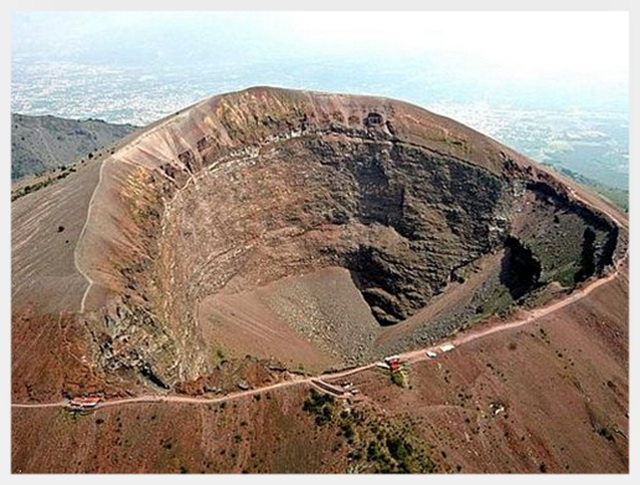
Wear shoes not sandals but don’t do what I did and wear your new white trainers – they’ll be covered in red Vesuvius dust and pretty much ruined by the time you get back!
There are a couple of souvenir shops which sell drinks and basic snacks, and another at the crater. When I visited Vesuvius there weren’t any public toilets anywhere on the volcano, and after overdoing it on hydration for the climb I ended up begging the shop at the car park to be allowed to use their (non-flushing!) toilet. In an exciting development I’ve been told that there are now public toilets at the upper car park.
At the top, walk around the crater at least until you get to a jaggedy part with some steps as the crater looks different from different viewpoints. Try to spot Capri and Ischia on the horizon and Pompeii below and look out for puffs of sulphury-smelling smoke to remind you that it’s still an active volcano!
Can I visit Pompeii, Vesuvius and Herculaneum in one day?
You could, just about, but it’d be a long day and very rushed. I don’t think it’s possible on a typical cruise ship schedule. We did it in two days – one full day for Pompeii and another where we visited Vesuvius in the morning and Herculaneum in the afternoon (travelling from Sorrento), and that felt about right to us.
The two archaeological sites of Pompeii and Herculaneum are both very moving (not least because of the body casts at Pompeii and the skeletons at Herculaneum) and for me it was worth taking some extra time so it wasn’t too overwhelming.
Can I visit Pompeii from Rome on a day trip?
It’s possible to visit Pompeii on a self-guided day trip from Rome thanks to Italy’s amazing high-speed trains. If you choose the fastest train from Rome Termini to Naples Centrale you’ll be there in 1 hour 15 minutes. Tickets are very reasonably priced if you book in advance. From Naples, take the local Circumvesuviana train to Pompei Scavi – Villa Dei Misteri.
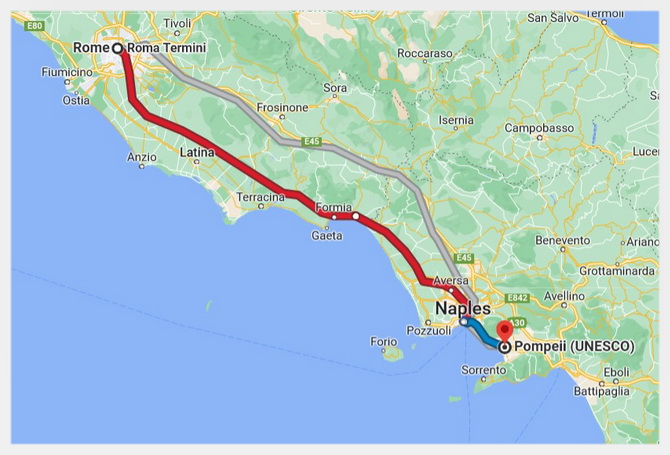
A guided coach tour or even a private transfer is another option for visiting Pompeii from Rome on a day tour.
Where should I stay for visiting Pompeii?
The best place to stay when you’re visiting Pompeii as part of a holiday is Sorrento. Sorrento is a beautiful town in its own right, with plenty to do and a wide variety of hotels. The railway station has frequent trains to Naples which call at both Pompei Scavi and Ercolano (for Herculaneum and Mount Vesuvius).
You can also take easy day trips to the Amalfi Coast (you can get to Amalfi and Positano by either bus or ferry) and to Capri. Sorrento is truly the perfect base for a holiday in this part of Italy.
For more travel information on Pompeii, check out the link: 12 tips for visiting Pompeii.
重点用词注解
Pompeii: 一般指庞贝古城, 距罗马约250公里,位于那不勒斯附近,维苏威火山东南脚下10公里处;与现在的庞贝新城区(Pompei)拼写区别,新城的字母中少一个i。
Vesuvius: 维苏威火山 (欧洲大陆活火山),维苏威在公元79年的一次猛烈喷发,摧毁了当时拥有2万多人的庞贝古城。
Plaster:灰泥,石膏灌注; casts: 铸件;石膏塑像
Campania region: 指意大利坎帕尼亚大区。意大利划分为20个一级行政区——大区(Regione)。坎帕尼亚大区(Campania region),位于意大利半岛南部、亚平宁山脉南麓、濒临蒂勒尼安海。首府是那不勒斯(Naples)。
Naples: 那不勒斯(又译纳波利、拿坡里)是意大利南部的第一大城市,坎帕尼亚大区以及那不勒斯省的首府。
Sorrento: 索伦托,意大利南部城镇。位于索伦托半岛北岸,濒那不勒斯湾。
Positano:波西塔诺,是位于意大利坎帕尼亚大区阿马尔菲海岸沿岸的一个小镇,城镇主要部份背山面海,波西塔诺成为了社会名流的后花园。阿马尔菲海岸(the Amalfi coast)被誉为欧洲最美丽的海滩。
Parco Archeologico di Pompei (Archaeological Park of Pompeii): 庞贝古城遗址
Pompei Scavi:庞贝火车站。那不勒斯 - 索伦托 (Napoli-Sorrento)线在Pompei Scavi站下车
decompose: verb [ I or T ] /ˌdiː.kəmˈpoʊz/ to decay, or to cause something to decay (使)腐化,使)腐烂
Circumvesuviana: 环维苏威小火车。那不勒斯到庞贝40分钟、索伦托Sorrento(阿玛尔菲海岸起点)72分钟。
Herculaneum: 指赫库兰尼姆城,也是公元79年维苏威火山爆发时的牺牲品。赫库兰尼姆城比庞贝城离维苏威火山更近一些。
Porta Marina:指马利纳门,是古城遗址的主入口。古城门票15欧元, 记住到信息中心(Infopoint)索取英文地图和中文指南。
amphitheatre:/ˈæm.fəˌθiː.ə.t̬ɚ/(露天)圆形剧场(或竞技场)
Garden of the Fugitives: 逃亡者花园,在这里都是摆放着遇难者的石膏塑像,有各种姿势。
rucksack(英国英语), 即 backpack, 背包
Ercolano:埃尔科拉诺古城遗址,与庞贝古城一起被毁。尔科拉诺古城遗址也是人们在打井的时候意外发现的,只是时间要晚于庞贝。
TB北京中文旅游服务
北京外宾旅游
北京外宾特色旅游
北京外宾旅行指南
北京包车旅游
北京参团旅游
北京长城徒步游
北京租车服务
北京定制旅游
TB北京英文旅游服务
Beijing Tour
Great Wall Tour
Beijing Tour Packages
Beijing Day Tour
Beijing Group Tour
Beijing Winter Tour
Car Rental in Beijing
Create My Beijing Trip
TB 英语
环球旅游英语
健康生活英语
新闻英语词汇
生活英语词汇
英语文学词汇
英语咬文嚼字
英汉智慧语录
版权声明:本文为原创文章,版权归 admin 所有,欢迎分享本文,转载请保留出处!


